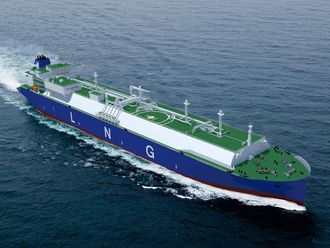London: Opec will need to pump more oil than previously expected to meet rising world demand and cover a shortfall from other producers such as Russia, the International Energy Agency said yesterday.
The agency, an adviser to 26 industrialised countries, also said it expected no early resolution to concerns over Iranian supply and lost output in Nigeria that have helped push crude prices towards record highs this week.
US crude oil has risen to almost $70 a barrel as violence in Nigeria cuts supply and demand grows.
Most members of the Organisation of Petroleum Exporting Countries are already pumping crude close to full capacity.
Higher than expected use in the Middle East and Asia Pacific prompted the IEA to raise its estimate for world demand this year to 85.1 million barrels a day in 2006, up 300,000 bpd from a previous estimate.
Output resurgence
"The adjustment has not come from China, which saw booming demand in 2004, but the other key growth areas in that year: the Middle East and Asian Pacific countries," the IEA said.
"The changes lift baseline demand by 310,000 bpd in 2004 and are carried forward."
While increasing the "baseline" demand estimate, the IEA trimmed a forecast for oil demand growth in 2006 to 1.47 milion bpd from 1.49 million bpd. This year's forecast is still above last year's level of 1.05 million bpd.
Because of higher demand and lower supply from non-Opec, the producer group will need to pump 29.4 million barrels per day this year, 400,000 bpd more than expected last month.
The IEA trimmed an estimate for growth in supply from outside Opec to 1.15 million bpd and said outages are delaying an output resurgence into the second half of the year.
IEA boss Claude Mandil told the Financial Times newspaper that supply from the world's second biggest oil exporter Russia will fall short of expectations over the next four years.
"Bad weather, mechanical problems, start-up delays and strikes have affected Argentina, Brazil, Ecua-dor, Bolivia, Peru, Canada, India, Vietnam, Sudan, Chad and Yemen," the IEA said.
"These factors underpin the report's proviso that annual non-Opec supply can under-perform vs. forecast by 300,000 to 400,000 bpd."
First quarter
China's imports jump 25.3% as auto sales soar
China's crude imports rose 25.3 per cent in the first quarter of the year as vehicle sales also soared, official statistics showed yesterday, putting further pressure on world oil prices.
Crude imports for the world's second biggest oil consumer in the first three months of 2006 were 37.13 million tonnes, the General Administration of Customs said in a statement on its website. The figure for March was 12.73 million tonnes.
The 25.3 per cent rise compared to January-March 2005 showed a renewed spike in oil demand from China after imports rose just 3.3 per cent to 130 million tonnes last year. China's crude imports had surged 34.8 per cent in 2004. China has over the past few years been seeking to rapidly expand its global sources of crude, looking to the Middle East, Africa, Central Asia and Russia, to fuel rapid economic development.
The announcement of China's import figures came after the nation's auto industry reported a record 1.73 million vehicles had been sold in the first quarter of this year, a 36.85 per cent rise over the same period in 2005.












